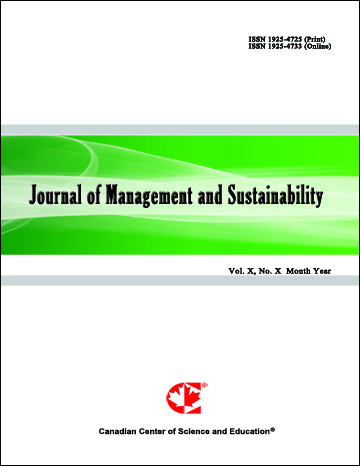Organizational Sustainability During Economic Downturn: The LEAD Model Approach to Reducing Citizenship Fatigue
- LaJuan Perronoski Fuller
Abstract
Leadership driven organization citizenship behavior is a management and sustainability practice that requires employees to do “more with less.” This leadership style is more evident during times of economic downturns precipitated by events such as COVID-19. Leadership-driven OCB initiatives can pressure employees to perform thereby creating stress, burnout, and citizenship fatigue. Consequently, citizenship fatigue has a negative relationship with organizational citizenship behavior. Rather than employees yielding to leadership-driven OCB pressure, this research seeks to investigate ethical leadership decision-making that alleviates stress and burnout that leads to citizenship fatigue outcomes. This research applies the Leader Ethics and Decision-making model to investigate the potential to resist citizenship fatigue within the five dimensions of organizational citizenship. The study consisted of 285 full-time employees in the United States. The findings concluded that LEAD influences the five dimensions of organizational citizenship behavior. Additionally, citizenship fatigue did not influence LEAD’s ability to influence OCB. Leaders, managers, supervisors, and decision-makers can apply the LEAD model as an ethical leadership strategy that reduces burnout and pressure and positively influences organizational citizenship behavior. Leaders, managers, and supervisors can adopt the LEAD model for sustainability management during economic downturn to foster a resilient, high-functioning, culturally diverse, and sustainable workforce. Therefore, integrating ethical leadership into management and sustainability practices assist in times of economic downturn and ensure long-term organizational viability.
- Full Text:
 PDF
PDF
- DOI:10.5539/jms.v14n1p78
Journal Metrics
Google-based Impact Factor (2021): 1.54
h-index (July 2022): 37
i10-index (July 2022): 147
h5-index (2017-2021): 12
h5-median (2017-2021): 19
Index
- Academic Journals Database
- ANVUR (Italian National Agency for the Evaluation of Universities and Research Institutes)
- CAB Abstracts
- CNKI Scholar
- EconBiz
- Excellence in Research for Australia (ERA)
- GETIT@YALE (Yale University Library)
- Harvard Library
- HeinOnline
- Infotrieve
- JournalTOCs
- LOCKSS
- MIAR
- PKP Open Archives Harvester
- RePEc
- Scilit
- SHERPA/RoMEO
- Stanford Libraries
- UCR Library
Contact
- Evelyn XiaoEditorial Assistant
- jms@ccsenet.org
